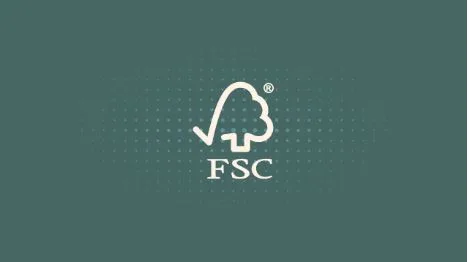Understanding Forest Stewardship: FSC, Greenguard & More Certifications
If you’ve ever stood in the lumber aisle, compared flooring samples, or evaluated a supplier’s deck of sustainability claims, you know how confusing “green” can get. Labels and logos crowd packaging, each promising healthier products or better forests. This guide cuts through the noise by explaining the most common certifications you’ll see on wood, paper, furniture, and building materials—what they mean, how they differ, and when they matter.
Why certifications matter (and where they fall short)
Sustainability certifications do two big jobs:
- They translate complex environmental and social practices into simple signals for buyers.
- They create accountability—audits, standards, and paper trails that discourage greenwashing.
That said, not all certifications evaluate the same thing. Some focus on how forests are managed. Others look at indoor air quality and chemical emissions. Still others evaluate the whole product lifecycle. Understanding the category helps you make an apples-to-apples decision.
Below are the major players you’ll encounter, grouped by what they actually certify.
Forest management & responsible sourcing
Forest Stewardship Council (FSC)
The Forest Stewardship Council is the most widely recognized global standard for responsible forest management. FSC certification covers how forests are harvested and protected, with criteria spanning biodiversity, high conservation values, indigenous and community rights, water quality, and long-term forest health. Products can carry various FSC labels:
- FSC 100%: All fiber comes from FSC-certified forests.
- FSC Mix: A blend of FSC-certified, recycled, and controlled (low-risk) sources.
- FSC Recycled: Made entirely from verified recycled content (pre- and/or post-consumer).
To display the logo, companies must maintain Chain of Custody controls so certified material can be traced from forest to finished product. For buyers, FSC is a strong signal that the wood or paper wasn’t sourced at the expense of critical ecosystems or community rights.
Programme for the Endorsement of Forest Certification (PEFC)
PEFC is an umbrella system that endorses national forest standards around the world. Its core principles are similar—sustainable yield, biodiversity, worker safety—but implementation happens through country-level schemes. In markets with strong national programs, you’ll often see PEFC alongside or instead of FSC. If your spec allows multiple options, treating FSC and PEFC as peers is common, but check project requirements.
Sustainable Forestry Initiative (SFI)
SFI is more prevalent in North America. Like FSC and PEFC, it addresses forest practices and Chain of Custody. If your project is U.S.- or Canada-focused and you need a responsible sourcing credential, SFI can be a practical pathway. Some buyers still prefer FSC due to its global governance model and stronger protections in certain areas, but the “best” choice will depend on your market, availability, and compliance needs.
How to choose among them:
- Global projects with strict NGO expectations often favor FSC.
- North American supply chains with regional sourcing may lean SFI.
- Projects that accept a range of credible national standards may specify PEFC (and sometimes FSC).
Always confirm which labels meet your client’s building program (LEED, WELL) or corporate sourcing policy.
Indoor air quality & chemical emissions
Forest stewardship is only half the story. Many wood and building products can off-gas volatile organic compounds (VOCs), affecting indoor air quality. That’s where emissions certifications come in.
GREENGUARD & GREENGUARD Gold
GREENGUARD certifies that a product meets strict limits on chemical emissions. GREENGUARD Gold is an even tighter tier intended for sensitive environments (schools, healthcare, homes). If you’re specifying furniture, flooring, paints, or adhesives, GREENGUARD Gold is a strong indicator the product will contribute less to indoor air pollution—especially important for enclosed, newly constructed spaces.
FloorScore
Used mainly for flooring and underlayments, FloorScore tests for VOC emissions against established thresholds. If you’re choosing hardwood, engineered planks, LVT, or laminates, FloorScore sits alongside GREENGUARD Gold as a credible emissions badge.
CARB Phase 2 & TSCA Title VI (formaldehyde)
For composite wood products (think plywood, particleboard, MDF), CARB Phase 2 (California) and TSCA Title VI (U.S. national) limit formaldehyde emissions from resins. These aren’t “eco” labels in the marketing sense—they’re regulatory compliance marks—but they’re vital. If cabinetry, furniture, or shelving includes composite panels, these standards are non-negotiable.
Quick take:
- FSC/PEFC/SFI ≠ low emissions. They say the wood was responsibly sourced, not that the finished item is low-VOC.
- Pair a forest certification (e.g., FSC) with an emissions label (e.g., GREENGUARD Gold) for both environmental and health performance.
Whole-product sustainability & material transparency
Sometimes you need a broader lens than “forest” or “emissions.”
Cradle to Cradle Certified®
This program evaluates products across multiple categories: material health, product circularity, clean air and climate protection, water and soil stewardship, and social fairness. Levels range from Bronze to Platinum. For complex assemblies—like furniture systems or finishes—Cradle to Cradle Certified can be a high-level shorthand for continuous improvement and safer chemistry.
Environmental Product Declarations (EPDs)
An EPD isn’t a certification of “goodness,” but a third-party–verified report of a product’s environmental impacts across its lifecycle (think global warming potential, smog formation, acidification). EPDs help designers compare products in the same category on transparent, standardized metrics.
Health Product Declarations (HPDs)
An HPD discloses product ingredients and associated health hazards. Like EPDs, it’s about transparency rather than a pass/fail “green” badge. In projects pursuing WELL or stringent corporate health goals, HPDs can be required.
How to read labels without getting lost
Match the label to the decision you’re making.
- Choosing a wood source? Prioritize Forest Stewardship Council (FSC), PEFC, or SFI.
- Concerned about indoor air quality? Look for GREENGUARD Gold, FloorScore, and ensure CARB/TSCA compliance for composite woods.
- Need holistic sustainability or transparency? Add Cradle to Cradle, EPDs, and HPDs.
Watch for the fine print.
- FSC Mix is still meaningful, but it’s not the same as FSC 100%.
- Chain of Custody matters. If a vendor can’t provide the certificate number or scope, the logo alone isn’t enough.
- VOC-free claims can be misleading; verify a recognized emissions certification.
Balance spec ideals with availability.
Sourcing strictly FSC 100% across all components can be hard, especially under tight timelines. Build alternates into your spec (e.g., “FSC or PEFC accepted”) and confirm lead times early.
Certifications in common purchasing scenarios
Scenario 1: Office furniture refresh
- What to ask for: FSC or PEFC wood, GREENGUARD Gold for emissions, HPDs for transparency.
- Why it works: You get responsible wood plus healthier indoor air in a dense workspace.
Scenario 2: Residential flooring
- What to ask for: FSC for solid wood or responsibly sourced veneers; FloorScore or GREENGUARD Gold for finished product emissions; CARB/TSCA for any engineered cores.
- Tip: Adhesives and finishes matter as much as the planks. Verify low-VOC products across the full system.
Scenario 3: Packaging & print procurement
- What to ask for: FSC or PEFC paper; look for FSC Recycled where possible.
- Add-on: Specify soy/vegetable inks and consult the printer on EPD availability if you’re tracking embodied carbon.
How certifications intersect with building programs
If you’re pursuing LEED, WELL, or similar frameworks, certifications can unlock credits or streamline documentation. For example, FSC-certified wood contributes to responsible sourcing credits in many programs; GREENGUARD Gold can support low-emitting materials requirements. Always check the current version of your rating system because credit paths evolve, and program-specific equivalencies (e.g., whether PEFC qualifies the same way as FSC for a given credit) can change over time.
Red flags and practical tips
- Logo without details: Ask for the certificate number and scope, or the product-level listing.
- “Sustainably sourced” with no reference: Request the standard (FSC/PEFC/SFI) and the Chain of Custody documentation.
- Too-good-to-be-true composite wood: Confirm TSCA Title VI/CARB Phase 2 and ask about the adhesive system used.
- One label for everything: No single mark covers sourcing, emissions, and lifecycle impacts. Use a stack of relevant certifications.
Vendor checklist you can copy-paste:
- Provide FSC/PEFC/SFI certificate number and product scope.
- Provide GREENGUARD Gold or FloorScore certificate (if applicable).
- Confirm TSCA Title VI / CARB Phase 2 for any composite wood.
- Share EPD and HPD (if available).
- Confirm lead time for certified stock and any upcharges.
The bottom line
“Forest stewardship” isn’t just about where wood comes from; it’s about how products perform in real spaces and across their lifecycle. Pair a forest management label like Forest Stewardship Council with an emissions label such as GREENGUARD Gold, then add transparency tools like EPDs and HPDs when you need deeper data. This layered approach gives you meaningful environmental credibility without falling for vague claims.
When in doubt, start with the decision you’re trying to make—source, health, or lifecycle—and pick the certification that answers that specific question. Do that consistently, and the alphabet soup turns into a practical toolkit for better products, healthier interiors, and truly responsible forest stewardship.



